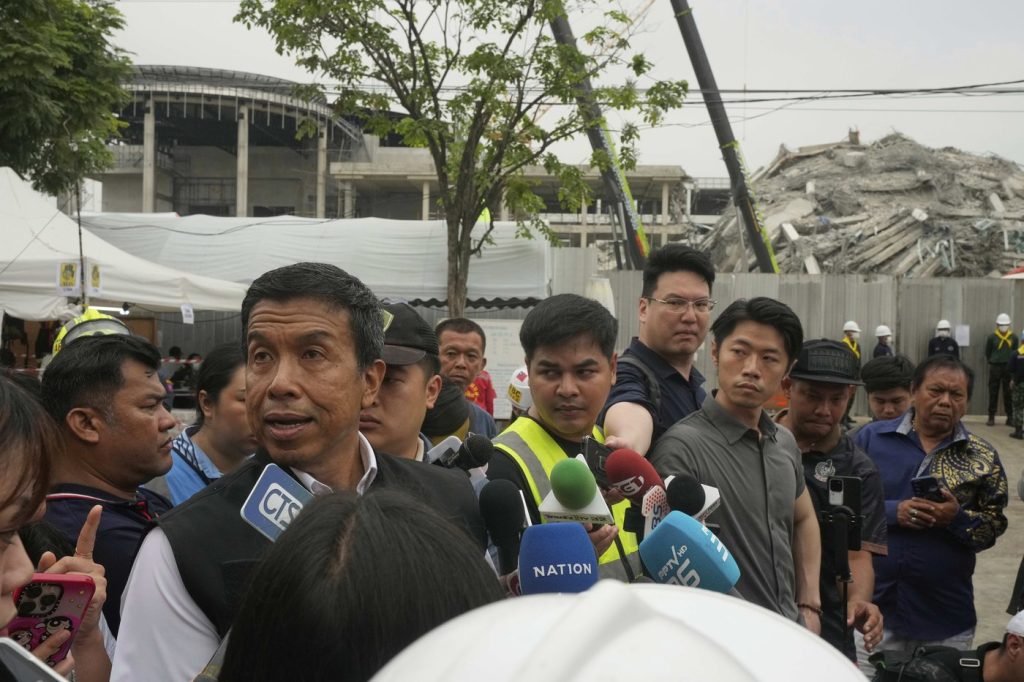BANGKOK (AP) — On Monday, Thai authorities initiated an investigation into the collapse of a single office tower that was under construction in Bangkok. The building fell during a 7.7 magnitude earthquake on Friday, which largely resulted in limited damage throughout the capital. The center of the quake was situated more than 800 miles (1,200 kilometers) away, yet it affected the city significantly.
Bangkok Governor Chadchart Sittipunt arrived at the construction site, where heavy machinery was employed to clear the debris in search of survivors among the 78 individuals who remain missing. He emphasized the urgency of finding any potential survivors, stating, "Even one life saved is worth all the effort, so I think we have to move on, carry on." Governor Sittipunt also highlighted the importance of improving building safety standards, especially given Bangkok's dense population and extensive number of high-rise structures.
Despite the death toll in Thailand being relatively low—at least 18 people, primarily associated with the construction site—the earthquake claimed more than 1,700 lives in neighboring Myanmar. The devastating incident transpired near the popular Chatuchak Market, raising further concerns regarding construction regulations and building safety in Bangkok where the ground is known to be unstable due to its alluvial soil.
In light of the tragedy, shares of Italian Thai Development, the property developer supervising the project, plummeted by 27% on Monday as scrutiny intensified regarding the high-rise's design, the enforcement of safety codes, and the role of the Chinese contractor responsible for the project, which was identified as the State Audit Office building. Interior Minister Anutin Charnvirakul, who has familial ties to one of Thailand's largest construction firms, has announced the formation of an investigation committee required to deliver findings within a week. He pointed out three possible factors linked to the collapse: the designer, the inspectors, or the builders themselves. "We will definitely find the true reasons as to why this building has collapsed, because it's all scientific," Anutin asserted.
Although Bangkok is not situated near a geological fault line, the city's soil instability poses unique challenges. Authorities have imposed restrictions on groundwater usage to curb subsidence caused by the immense weight of high-rise buildings throughout the city.
During Friday's earthquake, the city experienced an unusually prolonged and intense jolt, which caused water from rooftop pools to spill down the sides of skyscrapers, disrupted light-rail services, and prompted millions of residents to evacuate their homes in fear. Many individuals spent hours assessing the safety of their residences and workplaces following the quake. Most of the damage recorded in the city was superficial, such as fallen ceiling panels, fittings, and cracked plaster.
As recovery efforts continue, the focus remains on locating any potential survivors trapped beneath the rubble of the collapsed structure. Rescue teams are vigorously working amid the debris, while local hospitals prepare for possible aftershocks, ensuring the community remains vigilant in the aftermath of the disaster.










